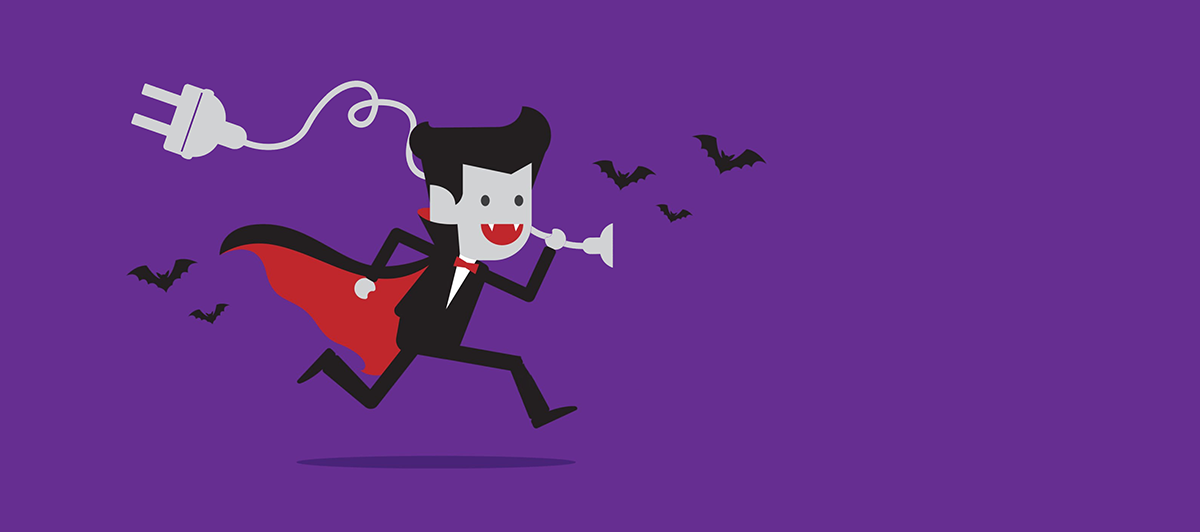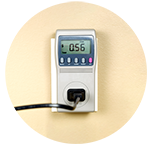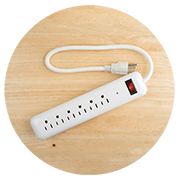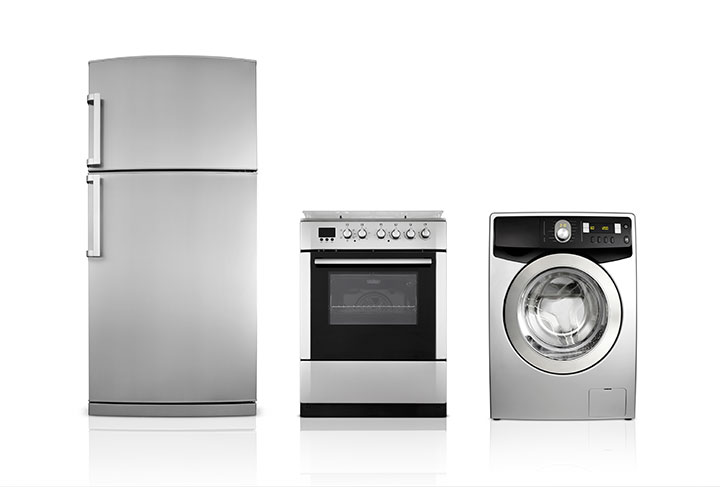
Slay your home's energy vampires
The mythical vampire has inspired fear and fascination in folklore for centuries. But there are vampires of another kind lurking in your home that are all too real. Instead of your blood, they drain your electricity.
An "energy vampire" is an item that draws electric power when it's not being used. And while the idea of a phone charger dangling from a wall or a cable box regularly downloading content may not seem so terrifying, the overall result is scary if you care about energy conservation. Energy vampires cost American households billions of dollars a year while using 50 large power plants' worth of electricity (according to a study by the National Resources Defense Council). The U.S. Energy Department estimates about 5-10 percent of household electricity is wasted in this manner, or about one month's worth of power every year. According to the NRDC study, the average American home has 65 devices that are always plugged in, with many using some amount of electricity regardless of whether they're powered on or not.
How much you're losing
 Just how much juice are the energy vampires draining from your home's outlets? There are a few ways to estimate this. One is to measure the energy use of your devices by plugging them into a usage meter, which will show you both active and standby power consumed. (The "Kill A Watt" is a popular model.)
Just how much juice are the energy vampires draining from your home's outlets? There are a few ways to estimate this. One is to measure the energy use of your devices by plugging them into a usage meter, which will show you both active and standby power consumed. (The "Kill A Watt" is a popular model.)
Another is to install a home energy use monitor. The Sense, among its many other features, shows your entire home’s “always on” power in watts. (Note: These devices must be connected directly to your home’s circuit breaker, so professional installation is recommended.)
You could also use your home's electric meter to get a sense for your home's baseload. Pick a period of time when you aren't actively using any lighting or electrical appliances (like overnight, or a weekend when no one is home), and look at your meter before and after and write down the totals for each and subtract the difference. It will include some non-vampire use (like the refrigerator and hot water heater if electric) but is still useful for setting a base level which you could compare before and after taking steps to reduce the vampire load.
Unplug it
 Pulling the plug is the silver bullet for stopping vampire load. Admittedly, this isn't convenient for frequently used items. But it's worth doing for devices you don't use every day. These vary but might include:
Pulling the plug is the silver bullet for stopping vampire load. Admittedly, this isn't convenient for frequently used items. But it's worth doing for devices you don't use every day. These vary but might include:
- Television/DVR in a guest room
- Video game systems
- Printers
- Stereos
- Phone chargers when not in use
- DVD players
- VCRs
- Dehumidifiers
- Electric space heaters
- Anything with a digital display (including many microwaves and coffeemakers)
- Anything with a power adapter that feels warm to the touch when plugged in
Get some smart power strips
 A basic power strip can reduce vampire load by offering an easy way to cut the power to multiple items. But some of these will still consume electricity when powered off. Smart power strips take energy conservation further by automatically preventing devices not in active use from using electricity. It's a good idea to purchase a few of these and place them wherever you have multiple devices generating vampire loads. An entertainment center is a good place to start since set-top boxes, televisions, stereos, and video game consoles are among the largest consumers of vampire load.
A basic power strip can reduce vampire load by offering an easy way to cut the power to multiple items. But some of these will still consume electricity when powered off. Smart power strips take energy conservation further by automatically preventing devices not in active use from using electricity. It's a good idea to purchase a few of these and place them wherever you have multiple devices generating vampire loads. An entertainment center is a good place to start since set-top boxes, televisions, stereos, and video game consoles are among the largest consumers of vampire load.
Tweak your settings
Many items can be configured to use less standby power.
- Computers: Set your desktop or laptop to go into "sleep mode" when idle rather than a screen saver. A PC in sleep mode vs. screen saver uses about 1/10 the amount of energy (10 vs. 100 watts per hour, a savings of about $180 a year based on recent New York State electricity prices).
- Video game consoles are usually shipped with a default instant-on standby mode that leaves them on at all times, so they can download updates and quickly boot up. But this uses a significant amount of electricity- about 13 watts of constant power use vs. .5 watts in eco mode. The downside of eco mode is longer boot up time.
- Televisions often have a similar standby mode meant to decrease start up time. One common manufacturer calls it "quick start." According to the NRDC study, this could account for up to 37 watts of constant power use, so disabling it could result in significant savings. (While you're adjusting settings, most televisions also have an "eco" mode that adjusts screen brightness based on ambient light, which can also further reduce your television's energy use.)
Consider more efficient replacements
There's only so much you can do to reduce your home's baseload energy use with your existing appliances. The next step is to consider seeking out more efficient models when it's time to replace large appliances. Look for devices and appliances that bear the ENERGY STAR label. In some cases, it's better not to wait for the appliance to malfunction before replacing it. Refrigerators are a good example. One commenter on a YouTube video about the Kill A Watt energy meter used the device to measure how much electricity an old refrigerator was consuming. "Was absolutely blown away by the high consumption of my old fridge, my power bill shrunk significantly after replacing it with an energy saver."
Replacing incandescent bulbs with LEDs is another way to improve efficiency. By replacing your home's six most-used incandescent bulbs with ENERGY STAR LEDs you can save about $90 per year. (Make sure you pick out the right LED at the right price: Check out our buying guide.)



